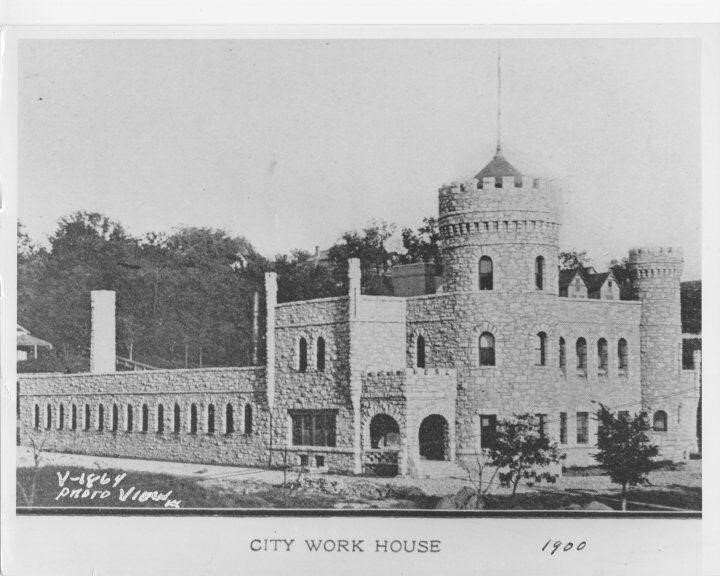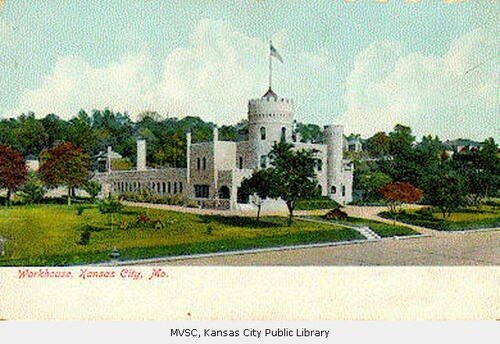
Vine Street Workhouse
Vine Street Workhouse
The Vine Street Workhouse, popularly known as the “workhouse castle,” was constructed in 1897 and was designed by architects A. Wallace Love and James Oliver Hog in the Romanesque revival style and constructed with yellow limestone. Prisoners of the workhouse, mostly vagrants and petty criminals, labored on public works projects. One such project was quarrying the limestone used in the construction of the workhouse itself. Since its closure as a workhouse in 1927, the building has had multiple uses, although none of them lasted for long.
In 2014, Daniel Edwards, an architectural engineer, offered to clean up the historic Vine Street Workhouse in exchange for hosting his wedding in the space. With a $12,000 grant from the Community Capital Fund, Edwards asked the community to help him with the castle. In six weeks, the group had cleared the garbage and cleaned the space. Unwilling to stop with the cleanup, Edwards made plans to renovate the castle and make it into a community space that would host a nonprofit. He believed the structure, once used to house prisoners, could now be used to pull the community together and reinvigorate the historic 18th and Vine neighborhood. Edwards was not the first, nor will he be the last, to express interest in the historic site.
Officially abandoned in 1972, the workhouse sat dormant for a decade. Then in the 1980s, the Black Archives of Mid-America sought the rights to the building. They envisioned the structure could be repurposed as a museum and home for the archives themselves. Unfortunately, the archive’s dreams never came to fruition due to cost and internal politics. Today, the archives are housed in a different building in the 18th and Vine district where they provide a space to collect, preserve, and make available African American history to the greater Kansas City area. Throughout its long history, the Vine Street Workhouse has served many purposes from prison to workspace. Today, it stands in ruin, but tomorrow with some investment it could be transformed into more than a structure. It could be transformed into a community center as community members like Edwards had once dreamed.
Works Cited
“African American Heritage Trail.” Kansas City, Missouri. https://www.kcmo.gov/city-hall/departments/city-planning-development/historic-preservation-office-and-commission/african-american-heritage-trail. Accessed December 12, 2019.
Black Archives of Mid-America. http://www.blackarchives.org/. Accessed December 10, 2019
Esther Honig. “What Is That? Kansas City's Vine Street Castle.” KCUR. July 24, 2014. Accessed December 12, 2019.
Ray, Sam (Mildred). "A Postcard from Old Kansas City,” published in Kansas City Times. December 4, 1987. Accessed November 21, 2019. https://kchistory.org/islandora/object/kchistory%3A108853?solr_nav%5Bid%5D=5855e4a0c11e35f3abc9&solr_nav%5Bpage%5D=0&solr_nav%5Boffset%5D=0.
“What's the Story behind the Ornate Building at 2001 Vine Street?” Kansas City Star, July 31, 1988.
Content Provided by
Hunter Albright, student at the University of Missouri Kansas City as part of Dr. Sandra Enriquez’s Urban History Class.






